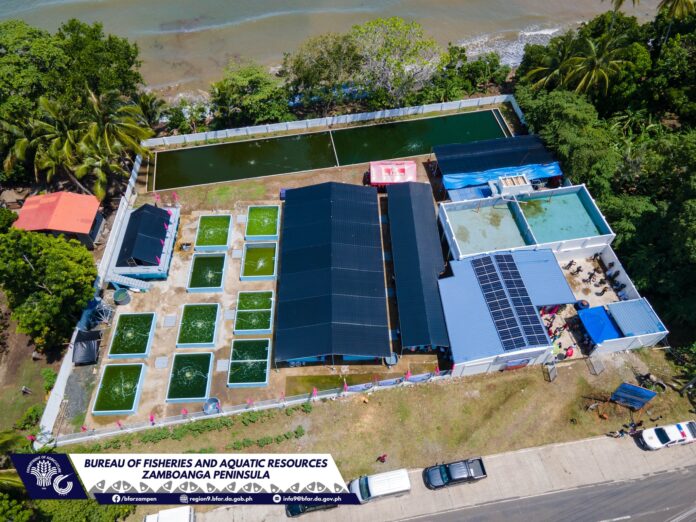The Bureau of Fisheries and Aquatic Resources (BFAR) inaugurated Zamboanga Peninsula’s first first-ever government-operated multi-species marine hatchery last week.
Located in Jose Dalman, Zamboanga del Norte, the project aims to enhance local aquaculture production by producing fry and fingerlings to benefit local fish farmers.
BFAR said that in the first few years the facility will focus on milkfish fry production of 12.5 million annually at 50 percent survival rate.
“Why bangus? Because the technology is already available; we have lots of fishponds; we have more areas for development; that is why our primary commodity for this hatchery is bangus,” said Isidro Velayo Jr., BFAR officer-in-charge.
Velayo said there are also plans to add more species to the program to maximize its income potential.
According to Velayo, the hatchery will provide the seed requirement for grow-out facilities like ponds and cages in the Zamboanga Peninsula, including the more than 200 milkfish cages operating in the different mariculture parks in the region.
The agency said this development will result in lower fry costs, which mean lower operating capital, the emergence of more grow-out areas, additional revenue for the local government unit and more employment opportunities for the community.
With the facility, local fish farmers should soon no longer source their fry and fingerlings from wild fry gatherers, private hatcheries from other regions or even from traders selling imported fry from Indonesia.
The BFAR said that in the next few years, the marine hatchery will diversify and produce 25 million milkfish larvae, 10 million pompano larvae, 2.7 million pompano fry and 1.5 million mangrove crablets annually.
The Jose Dalman Marine Fish Hatchery was designed by the Southeast Asian Fisheries Development Center and built in partnership with the local government unit which provided the 3,000 square-meter lot for the project.
In the first two years, the BFAR regional office in Zamboanga Peninsula will manage the hatchery, provide technical skills through training and capacity building in preparation for the hatchery turnover to the local government unit of Jose Dalman.
The BFAR said that of the 57 multi-species hatcheries and other aquaculture facilities constructed nationwide during the 16th, 17th and 18th Congresses, 26 have been completed, 21 are under construction and 10 undergoing feasibility studies and procurement.







